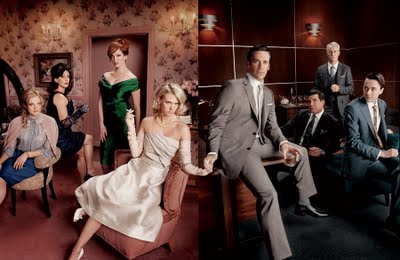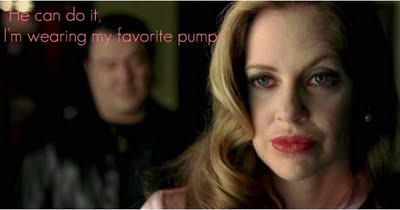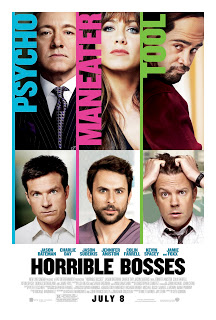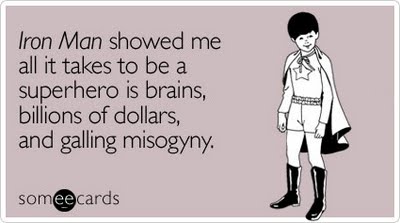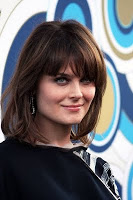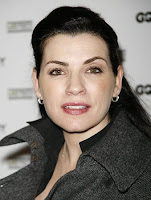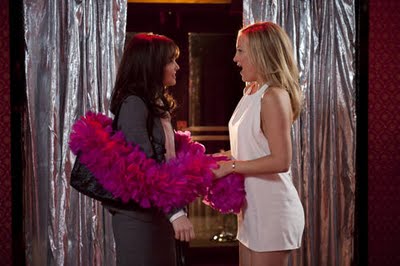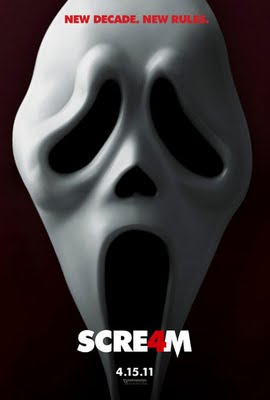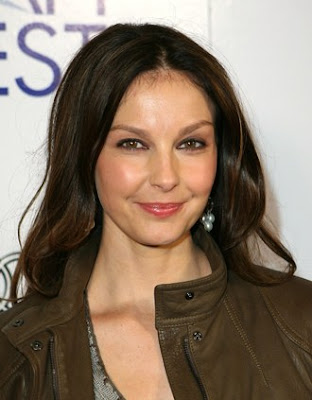I recognize that there’s a difference between displaying sexism because it’s the time period and condoning said sexism. But this IS a fantasy, not history, meaning the writers can imagine any world they wish to create. So why imagine a misogynistic one?
Written by Megan Kearns, cross-posted from The Opinioness of the World
When I watched the premiere of Game of Thrones, I almost choked on all the rampant misogyny. I kept watching, lured by the premise and intrigued by the complex plots, curious if things for women would improve. Throughout the first season, which just aired its finale last night, women are raped, beaten, burned and trafficked. I suppose you could chalk it up to the barbarism of medieval times. And I’m sure many will claim that as the show’s defense…or that the men face just as brutal and severe a life. I also recognize that there’s a difference between displaying sexism because it’s the time period and condoning said sexism. But this IS a fantasy, not history, meaning the writers can imagine any world they wish to create. So why imagine a misogynistic one?
Based on the best-selling
A Song of Fire and Ice series penned by fantasy author
George R.R. Martin (who
interjected a hefty amount of research into the books, including warfare, swordsmanship and medieval life),
Game of Thrones takes place in a medieval land, where kings, queens, lords, ladies, warriors, knights, servants, priests, priestesses and prostitutes all play a role in a political battle of wills. Becoming an overnight sensation, the show dubbed “
The Sopranos in Middle Earth,” (or fantasy for people who aren’t really into fantasy) packs every episode with political intrigue, compelling characters, subtle acting, rich dialogue and suspenseful plot twists. These are the reasons I love this complex show. But it’s hard for me to ignore all the sexism. Luckily, a multitude of strong, ferocious women DO inhabit this bleak fantasy world.
One of the most complicated characters, Daenerys Targaryen (Emilia Clarke), the meek, docile sister of her creepy pervo pimping brother, accused of having a “gentle heart,” becomes queen, the Khaleesi of the Dothraki. Watching her transformation into a caring yet steely, powerful queen (from standing up for herself against her douchebag brother Viserys Targaryen to defending women healers in a battle and rallying her people), has been one of the most enjoyable parts of the show for me. While she’s one of my fave characters, massive misogynistic problems still exist with her role. Viserys asks his sister:
Viserys: So tell me, sweet sister, how do we go home?
Daenerys: I don’t know.
Viserys: We go home with an army. With Khal Drogo’s army. I would let his whole tribe fuck you–all 40,000 men and their horses too if that’s what it took.
Oh, rape and sexual exploitation all in one. How fucking lovely. Daenerys falls in love with her husband, who her brother sold her off to, the warrior king
Khal Drogo (Jason Momoa). Newsflash, no woman would fall in love with the man her bought and raped her.
Doreah, one of Daenerys’ handmaidens, teaches her how to seduce Khal Drogo and gain his respect with her sensuality. Oh, that’s how women earn respect?? Silly me, I forgot about good old
stiletto feminism.

Played spectacularly (if a bit underutilized) by Lena Headey (whom I loved, loved, LOVED in The Sarah Connor Chronicles and was the only redeeming thing about 300), Queen Cersei Lannister is the shrewd, manipulative Queen of the 7 Kingdoms, obsessed with power. A cunning and scheming survivor, she orchestrates political machinations. In the book (which I haven’t read), she’s annoyed by the constraints of her gender which don’t allow her greater political power. She also utters the line to Lord Eddard Stark (Sean Bean) that becomes the title of the show (and first book in the series):
“In the game of thrones, you win or you die. There is no middle ground.”
Lady Catelyn Stark (Michelle Fairley), is the wise and graceful wife to Lord Eddard Stark, mother of the Stark brood. Yet she’s not afraid to speak her mind and help her son strategize and negotiate in battle. Wherever she goes, particularly in the region of the North, she’s revered and respected. She is the one, almost single-handedly, who’s brokered and negotiated every deal which brings all of the clans of the North together, unifying them in war.
Sansa Stark (Sophie Turner), daughter of Catelyn and Eddard, differs from many of the depicted women for she only cares about dancing and getting married (at 13?!) as she simpers and worships douchebag Prince Joffrey (Jack Gleeson). But we eventually begin to see a different side of Sansa after she witnesses a horrific tragedy, brought upon by her poor judgment.

My fave gender-bending character,
Arya Stark (Maisie Williams), Sansa’s little sister, is a sword-wielding badass…at the age of 11. A feisty tomboy, Arya is spunky, resourceful and outspoken. One of my fave scenes consists of Arya and her father Eddard Stark when she asks him about becoming a leader. He tells her about the man she’ll marry some day and how she’ll give birth to sons who’ll become lords. Refusing to be defined by gender roles or by her relationship to a man, she retorts, “That’s not me.” My only problem is that Arya is still a child, not yet a woman. Too often, films and TV shows are uncomfortable with authoritative women, depicting female empowerment through teens and young girls instead.
One of the rare times the show passes the Bechdel test (and of course it’s debatable if it actually does pass it in this scene as it’s spurred by the illness of Daenerys’ husband Khal Drogo) is in the season finale when Mirri Maz Duur (Mia Soteriou), the enslaved sorceress/healer and Daenerys speak. Daenerys, furious at Mirri Maz, proclaims that she saved her. But Mirri Maz replies that by the time she was “saved,” she’d already been raped by three Dothraki men, her temple burned down, and townspeople she befriended slain. So she questions what exactly Daenerys saved her from? I thought this was an interesting scene depicting the power of perspective. It disappoints me though that when two women talk with one another on-screen, which doesn’t happen very often, the plot usually pits them against one another, a common trope in films and TV shows.
In addition to Mirri Maz, there are other secondary female characters who we don’t know much about (yet): Ros, Armeca and Shae (sex workers); Jhiqui, Irri and Doreah (Daenerys’ handmaidens); Osha (a wilding – person living north of the Wall – and slave of Winterfell); and Septa Mordane (a priestess who sacrifices her life to protect Sansa).

Many of the women navigate the sexist landscape by playing their parts yet asserting themselves when they can by speaking their minds. Although they are quickly put in their place, with a fist or harsh words, if they speak too boldly, reminding them of where they exist on the social ladder.
SPOILERS!! –> When Cersei’s son Joffrey becomes king, it seems that she’s finally going to be able to rule, with her son a mere figurehead. But after he flagrantly disobeys her command, calling her (and Sansa) “soft-hearted,” it’s clear who’s in charge here. Despite all of Catelyn’s strategies and bartering, when it comes down to who will lead the army against King’s Landing, all of the clan leaders proclaim her son Robb Stark the “King of the North,” rather than Catelyn the “Queen of the North.” Arya has to go into hiding, as a boy, to evade the wrath of the king.
UBER SPOILER!! -> In the penultimate scene in the finale, we see Daenerys burning a funeral pyre. She frees the Dothraki slaves, proclaiming to them and the Dothraki who’ve remained by her side that they will be her new khalasar (band of people) if they swear allegiance to her. A pivotal scene as she becomes the first female ruler of the Dothraki, marking the first time a woman asserts her power and leadership in such an overt manner. In the final scene, after entering the fiery flames, we see Daenerys survive, only to emerge with the three dragon eggs hatched, the three dragons skittering over her body, resting on her hip, ankle and shoulder. While I was thrilled she survived, my elation quickly soured as I realized the actual implication here: that a woman could not be a powerful ruler on her own merit, she had to have supernatural blood course through her veins with monster minions bolstering her power.
 I know I’m being hard on the show. Despite its gender problem (and race problem – very few people of color are characters, except for the Dothraki who are depicted as “primitive” and “savage,” a common racist trope) it is absolutely fantastic and amazing. By the 4th episode I was hooked, eager to see what would happen next. But a show so meticulously made of such stellar caliber shouldn’t suffer from so much sexism. I shouldn’t have to overlook excessive misogyny in order to watch TV. The show seems to remain incredibly faithful to its source material. Interestingly, George R.R. Martin wrote the first book, entitled Game of Thrones, from the perspective of 9 different characters (Will of the Night’s Watch, Lord Eddard Stark, Lady Catelyn Stark, Jon Snow, Arya Stark, Sansa Stark, Bran Stark, Tyrion Lannister, Daenerys Targaryen), half from the vantage of the female characters. As delighted as I am with myriad strong heroines, a show devoid of female writers (save for Jane Espenson who co-wrote one episode), directors or producers, can’t help but feel like a testosterone extravaganza.
I know I’m being hard on the show. Despite its gender problem (and race problem – very few people of color are characters, except for the Dothraki who are depicted as “primitive” and “savage,” a common racist trope) it is absolutely fantastic and amazing. By the 4th episode I was hooked, eager to see what would happen next. But a show so meticulously made of such stellar caliber shouldn’t suffer from so much sexism. I shouldn’t have to overlook excessive misogyny in order to watch TV. The show seems to remain incredibly faithful to its source material. Interestingly, George R.R. Martin wrote the first book, entitled Game of Thrones, from the perspective of 9 different characters (Will of the Night’s Watch, Lord Eddard Stark, Lady Catelyn Stark, Jon Snow, Arya Stark, Sansa Stark, Bran Stark, Tyrion Lannister, Daenerys Targaryen), half from the vantage of the female characters. As delighted as I am with myriad strong heroines, a show devoid of female writers (save for Jane Espenson who co-wrote one episode), directors or producers, can’t help but feel like a testosterone extravaganza.
It would be one thing if the show made a commentary on the sexism that pervades society, a la Mad Men. But that doesn’t appear to be what’s happening here. The women are subjected to misogyny and patriarchy (hmmm…sounds like modern times!). But none of them challenges it, even subversively. When the one female character acts authoritatively, asserting her will and seizing power, she’s diminished by her supernatural powers. Even the women who are bold and strong on the show, except perhaps Daenerys, are tethered to a short leash, ultimately deferential to the more powerful men surrounding them. For a TV show borne of fantasy, it’s time we imagined better.
Megan Kearns is a blogger, freelance writer and activist. A feminist vegan, Megan blogs at The Opinioness of the World, where she writes about gender in pop culture, sexism in the media, reproductive justice and living vegan. Her work has also appeared at Arts & Opinion, Italianieuropei, Open Letters Monthly, and A Safe World for Women. She earned her B.A. in Anthropology and Sociology and a Graduate Certificate in Women and Politics and Public Policy. Megan lives in Boston with her diva cat and more books than she will probably ever read in her lifetime. She contributed reviews of The Girl with the Dragon Tattoo, The Girl Who Played with Fire, The Girl Who Kicked the Hornet’s Nest, Something Borrowed, !Women Art Revolution, The Kids Are All Right (for our 2011 Best Picture Nominee Review Series) and The Reader (for our 2009 Best Picture Nominee Review Series). She was the first writer featured as a Monthly Guest Contributor.
 I know I’m being hard on the show. Despite its gender problem (and race problem – very few people of color are characters, except for the Dothraki who are depicted as “primitive” and “savage,” a common racist trope) it is absolutely fantastic and amazing. By the 4th episode I was hooked, eager to see what would happen next. But a show so meticulously made of such stellar caliber shouldn’t suffer from so much sexism. I shouldn’t have to overlook excessive misogyny in order to watch TV. The show seems to remain incredibly faithful to its source material. Interestingly, George R.R. Martin wrote the first book, entitled Game of Thrones, from the perspective of 9 different characters (Will of the Night’s Watch, Lord Eddard Stark, Lady Catelyn Stark, Jon Snow, Arya Stark, Sansa Stark, Bran Stark, Tyrion Lannister, Daenerys Targaryen), half from the vantage of the female characters. As delighted as I am with myriad strong heroines, a show devoid of female writers (save for Jane Espenson who co-wrote one episode), directors or producers, can’t help but feel like a testosterone extravaganza.
I know I’m being hard on the show. Despite its gender problem (and race problem – very few people of color are characters, except for the Dothraki who are depicted as “primitive” and “savage,” a common racist trope) it is absolutely fantastic and amazing. By the 4th episode I was hooked, eager to see what would happen next. But a show so meticulously made of such stellar caliber shouldn’t suffer from so much sexism. I shouldn’t have to overlook excessive misogyny in order to watch TV. The show seems to remain incredibly faithful to its source material. Interestingly, George R.R. Martin wrote the first book, entitled Game of Thrones, from the perspective of 9 different characters (Will of the Night’s Watch, Lord Eddard Stark, Lady Catelyn Stark, Jon Snow, Arya Stark, Sansa Stark, Bran Stark, Tyrion Lannister, Daenerys Targaryen), half from the vantage of the female characters. As delighted as I am with myriad strong heroines, a show devoid of female writers (save for Jane Espenson who co-wrote one episode), directors or producers, can’t help but feel like a testosterone extravaganza.




